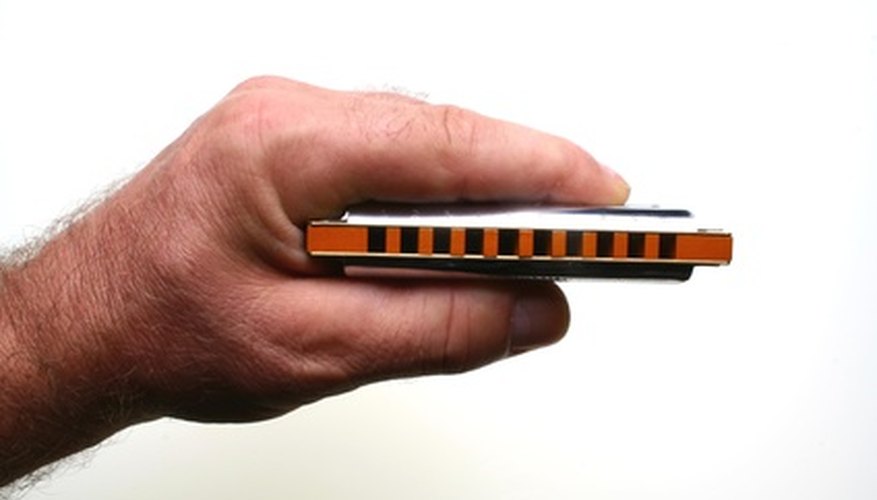Tablature (tab) is a method of using symbols and numbers to represent musical notes. You can write and read tab for multiple instruments, such as the guitar and the harmonica. If you have a piece of music that is written in standard notation, you may need to convert it to tab in order for other musicians in your band to be able to play the piece. Converting music notes to harmonica tab is a process of indicating which hole to play and whether to blow or draw in order to produce the note.
- Tablature (tab) is a method of using symbols and numbers to represent musical notes.
- You can write and read tab for multiple instruments, such as the guitar and the harmonica.
Refresh yourself if necessary on the notes on a diatonic harmonica in the key of C. Remember that to blow a note means to exhale into the harmonica, and to draw a note means to inhale into the instrument. The following list gives each hole with its blown note first and then its drawn note: 1 = C, D 2 = E, G 3 = G, B 4 = C, D 5 = E, F 6 = G, A 7 = B, C 8 = D, E 9 = F, G 10 = A, C
Isolate the music note that you want to convert.
Write each note as a number, as it corresponds with the correct hole on the harmonica. For instance, if you want to write a high C, you would write the number "7."
Indicate whether the note is blown or drawn. Some tabs do this with an up arrow for a blown note and a down arrow for a drawn note. If you use arrows, write the arrow over the number. For instance, in the case of a high C, you would write an up arrow over the number "7." Some tabs use a minus sign next to the number for a drawn note and a plus sign or no sign for a blown note.
- Write each note as a number, as it corresponds with the correct hole on the harmonica.
- Some tabs do this with an up arrow for a blown note and a down arrow for a drawn note.
